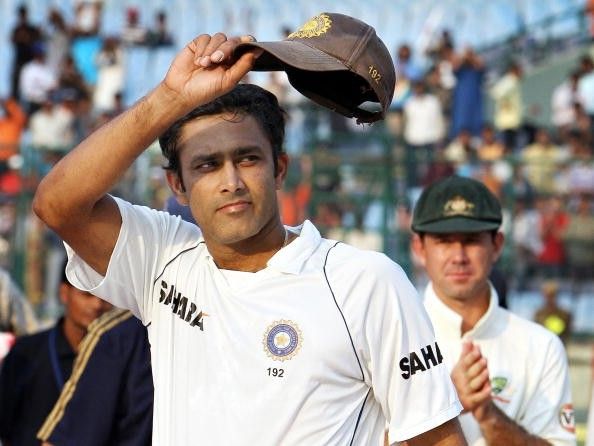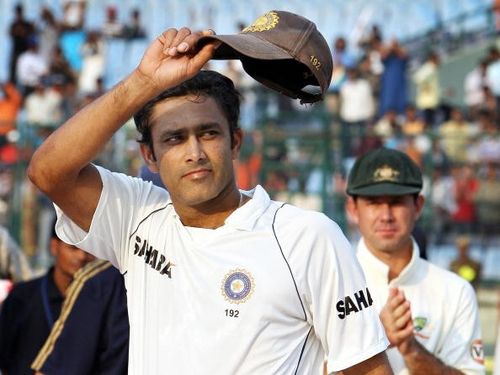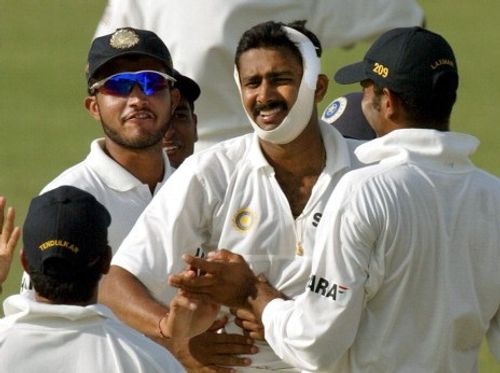
Why BCCI should involve Anil Kumble as well in the development of young cricketers

In the early part of June 2015, the Board of Control for Cricket in India (BCCI) set up a three-member Advisory Committee, comprising of Sachin Tendulkar, Sourav Ganguly and VVS Laxman, to help provide a roadmap on how to take Indian cricket forward. The 4th member of the Big 4, Rahul Dravid was also given an important responsibility of coaching the India 'A' and the U-19 team.
This move by the new regime of the BCCI, led by its President Jagmohan Dalmiya and secretary Anurag Thakur drew plaudits from many quarters, with everybody delivering a common verdict that the decision to appoint the 4 stalwarts would benefit Indian cricket in the long run.
However, along with the appointment of the Big 4, I believe the BCCI could have also given one more giant of Indian cricket - Anil Kumble - a role in their setup.
Kumble's stats in Test and ODI cricket speak for themselves. He took 619 wickets in 132 Tests and 337 wickets in 271 ODIs for India, in an international career that spanned close to two decades.
Apart from these stats, he also led the country to a famous triumph at Perth against Australia and was also the captain of the team that beat Pakistan 1-0 at home in 2007.
But apart from his outstanding numbers, there were many other qualities in Kumble which if imparted to youngsters at an early age could benefit them going ahead.
One of the things that the Bangalorean had to deal with almost right through his career was the constant criticism of him not being a genuine turner of the cricket ball. like a Shane Warne.
But during the course of his career, Kumble ignored all the criticism that came his way and instead focused on his strengths, which was to vary his pace smartly and earn his wickets, by putting pressure on the batsman.
One of the things that youngsters need to cultivate at a young age is the ability to follow your strengths and develop the self-confidence that they would eventually reach the top.
One of Kumble's other virtues was his determination and his 100% commitment to the team's cause. No example can be better to illustrate the above point than Kumble, heroically walking out to bowl in the Test match at Antigua in 2002 after having broken his jaw, courtesy a rising delivery from Mervyn Dillon and then picking up the prize scalp of Brian Lara.
If Twitter had existed at the time, I have no doubt the whole world would've gone onto to it to shower praises on him.

But the quality of Kumble that will stand out for me was his never-give-up attitude. If a ball was hit into a gap or into the outfield and if he was the one running after it, then you can be totally assured that either the ball would be stopped or it might have hit the rope, only after Kumble had given his 100%, if not more, to prevent it from doing so.
In his autobiography, Sachin Tendulkar called Kumble as one of the best triers in the game he ever saw.
During the course of his career, Kumble played numerous handy innings lower down the order for India with the bat, despite not being technically strong. And all those small innings eventually led to him scoring a Test hundred at number 8 against England at the age of 36 at the Oval in 2007.
When there was an uproar over the monkey gate incident in Sydney in 2008, Kumble showed that he was a no-nonsense character and even contemplated abandoning the tour midway, following a three-match ban on Harbhajan Singh.
All these above-mentioned features need to be ingrained in a budding cricketer at a young age. A talented cricketer isn't only the one who plays a flowing cover drive or swings a ball enormously. Determination, being a team player, not giving up etc also count as critical features in and if roped in, I feel Kumble will be able to help instill these qualities in upcoming players.